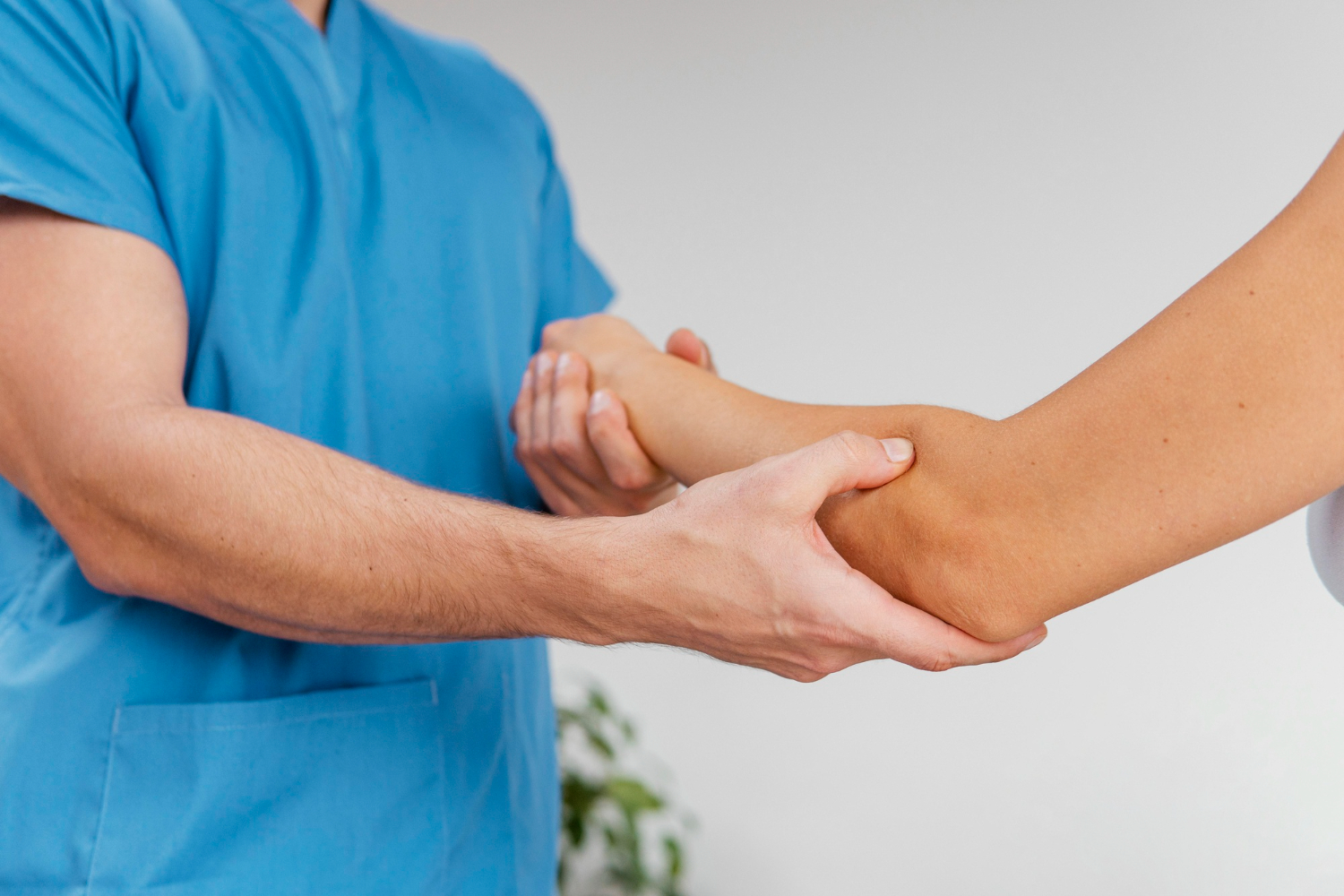Explore a comprehensive guide to tennis elbow symptoms, causes, and treatment options. Is your elbow hurting? You may have a tennis elbow, a problematic ailment. Anyone experiencing repeated motion in the arms may notice early signs of tennis elbow symptoms and treatment options. Chronic discomfort and diminished grip strength might result from delayed treatment, which can have a major impact on day-to-day activities and general quality of life.
Effective recovery depends on early treatment. Recognizing signs like elbow discomfort and grip weakness helps initiate the best treatment for tennis elbow sooner. Identifying and addressing the issue early can prevent chronic pain and ensure a smooth return to routine activities.
The symptoms and various treatments for tennis elbow are examined in this blog.
What is a Tennis Elbow?
Tennis elbow, also known as lateral epicondylitis, is a disorder in which a person feels discomfort on the outside area of their elbow. This pain results from repetitive strain, often linked to activities that worsen epicondylitis. Although common among tennis players, it also affects those who engage in repeated wrist or arm movements like lifting or typing.
Tennis elbow physiotherapy treatment often becomes necessary when daily motion continues to aggravate the tendons. At Vitruvian Physiotherapy Center, our experts focus on personalized care for this condition.
Symptoms of Tennis Elbow
Common symptoms of tennis elbow include:
- Severe discomfort and pain
- Trouble turning door knobs, shaky hands, or grasping items.
- Stiffness and swelling
- Having difficulty in typing, grasping, or lifting
Those googling Tennis elbow treatment near me often find relief through focused physiotherapy and expert diagnostics—both specialties at Vitruvian Physiotherapy Center.
Diagnosis of Tennis Elbow
Diagnosing tennis elbow often entails a comprehensive physical examination by a healthcare professional. During the exam, the physician may perform a tennis elbow test by applying pressure and observing arm movements. This helps determine pain sources.
In some cases, identifying the right treatment for tennis elbow pain may also require imaging, like MRIs or X-rays. Patients looking for the best hospital for tennis elbow surgery Dubai can trust Vitruvian Physiotherapy Center for quality post-operative rehab support.
Treatment Options for Tennis Elbow
Treatment for tennis elbow includes:
-
- Proper rest: A critical first step in treating tennis elbow is to give the afflicted arm plenty of rest and avoid activities that aggravate the discomfort. This lessens the chance of further injury and aids in the tendon’s recovery.
- Ice therapy: Using ice packs on the elbow for 10 to 20 minutes many times a day can help ease discomfort and decrease inflammation. To prevent direct skin contact, the ice pack must be wrapped in a towel.
- Pain relief medications: Pain and inflammation can be lessened using over-the-counter medications such as naproxen (Aleve) or ibuprofen (Advil, Motrin). You should take these drugs exactly as prescribed by your doctor.
- Physical therapy: A key component of tennis elbow treatment is physical therapy. A physical therapist can create a personalized workout regimen to increase forearm muscle strength, flexibility, and healing.
- Bracing: When doing exercises, using a brace or forearm strap can provide comfort and reduce the tension on the injured tendon. The brace, which is positioned just below the elbow, can be particularly useful for activities that often cause pain.
- Corticosteroid Injections: Injections of corticosteroids may be tried if other therapies have failed and the pain is severe.
- Platelet-Rich Plasma (PRP) Therapy: PRP therapy promotes healing by injecting the patient’s platelets into the injured region. Platelet growth factors have the potential to improve tissue healing.
- Surgical procedure: In rare cases, tennis elbow surgery Dubai becomes necessary after failed non-surgical attempts.
If you’re searching for the best tennis elbow doctor Dubai, Vitruvian Physiotherapy Center provides expert consultation and care.
Conclusion
In conclusion, tennis elbow symptoms are critical to preventing complications. Non-invasive techniques such as rest, ice, and therapy are highly effective. For advanced cases, procedures like PRP or shockwave therapy offer significant tennis elbow pain relief Dubai. At Vitruvian Physiotherapy Center, we pride ourselves on offering the most advanced care available for lateral epicondylitis treatment Dubai.
If you’re wondering where to treat tennis elbow in Dubai, don’t hesitate to contact us. Let our team guide you toward recovery with compassionate, expert care.
How is tennis elbow diagnosed?
Tennis elbow is typically diagnosed by a physical assessment. In addition to checking for elbow pain and soreness, a medical professional may ask you to carry out particular exercises to evaluate your strength and range of motion. Imaging tests like MRIs and X-rays can occasionally be used to rule out other disorders.
What are the initial treatments for tennis elbow?
Initial tennis elbow treatment Dubai includes:
- Putting the afflicted arm to rest to lessen the tension.
- Putting cold packs on the elbow to lessen discomfort and swelling.
- Use over-the-counter analgesics such as acetaminophen or ibuprofen.
- Supporting the elbow with a strap or brace.
- Carrying out mild strengthening and stretching activities.
Is tennis elbow limited to tennis players?
No, tennis elbow is not limited to tennis players only. It can happen to anyone who participates in activities that require repeated wrist and forearm motions. In addition to tennis players, this also covers golfers, carpenters, painters, and office professionals. This encompasses not only tennis players but also golfers, carpenters, painters, and office professionals.
When should I seek medical attention for tennis elbow?
You should seek medical attention or visit a top orthopedic doctor for tennis elbow Dubai if:
- Pain continues despite home therapies.
- You have excruciating arm pain or weakness.
- Around the elbow, you see warmth, redness, or edema.
- Pain makes it harder for you to carry out regular tasks.
